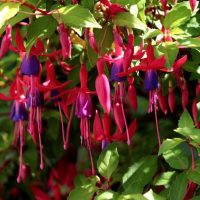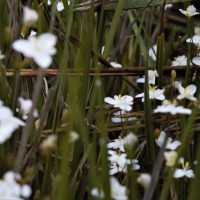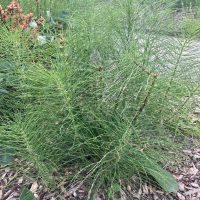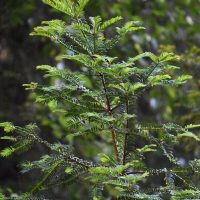Art at the Arboretum: John Grade

Join us for a FREE public opening of art installation, UNION, a stunning largescale outdoor sculpture created by one of the world’s leading contemporary artists, Seattle-based John Grade.
Read moreAugust 2023 Plant Profile: Cornelian Cherry

Scientific name: Cornus mas
Common name: Cornelian cherry, European cornel, Cornelian cherry dogwood
Family: Cornaceae (Dogwoods)
Native range: Southern and central Europe to western Asia
Location: At the Center for Urban Horticulture, there is a grove located in the northern lawn area along the central drive and the trees’ accession numbers are 87-90. At the Arboretum, there are three specimens under the accession number of 704-38 (grid 33-B) from the original planting of the Woodland Garden in 1938.
The Washington Park Arboretum: New Beginnings!

The horticulture staff at the Washington Park Arboretum are constantly planting new trees. These new plantings increase species diversity within the collection, succeed dead or declining trees, contribute to future increased canopy coverage and much, much more. All of the trees mentioned in this article were planted over the last year and are located within the Pinetum on the west side of Lake Washington Boulevard.
Read moreJuly 2023 Plant Profile: Hummingbird Fuchsia

Hardy Fuchsia love sun and do fine in part shade. Once established they tend to be drought hardy plants – I have one in my yard that I never water in summer and it has thrived over the past 15 years. They are the hardiest species of the Fuchsia genus and are rated for USDA Zones 6 & 7.
Read moreEasy to miss these beauties in June!

1) Libertia peregrinans New Zealand Iris
An iris in which each bloom only lasts a day, but blooms prolifically for several weeks.
Named/honored after Mde. Maire-Anne Libert, a Belgian botanist, mycologist, and plant pathologist.
Has sword-shaped leaves, only about one foot high off the ground, and easy-to- miss blooms.
Found in the New Zealand Entry Garden, at the north entrance of John Wott Way (U-shaped path).
Some Undesirable Plants in the Washington Park Arboretum Display Beds

1) Equisetum arvense L. Horsetail
Equisetum arvense (commonly known as “horsetail”) is native throughout the temperate and arctic areas of the northern hemisphere – any place with wet or damp soil with some sunlight.
Colonization relies heavily on its extensive, deeply-penetrating creeping root system and to a lesser extent, on spore production. During the winter, the foliage dies to the ground.
June 2023 Plant Profile: Japanese Nutmeg Tree

In Japan, the seeds of the nutmeg yew are desirable to be roasted and eaten or used to produce a cooking oil with a subtle nutty flavor highly prized in some circles for tempura. The ‘nuts’ are rich in vitamin E as well as sciadonic acid, known to reduce cholesterol.
Read moreSome plants to visit on your walk at the Washington Park Arboretum

1) Darmera peltata Umbrella Plant
Darmera peltata, commonly known as “Umbrella Plant”, is native to the West Coast of the United States, ranging from northern California to southern Oregon.
Umbrella Plant’s natural habitat is shady-to-partly shady stream banks and woodlands although it can be cultivated in full sun with proper watering.
In spring, Darmera sends up a cluster of small pink or white flowers on a single stalk before the umbrella-shaped leaves emerge.
April 2023 Plant Profile: Western Leatherwood

As Spring arrives, we here in the Pacific Northwest are gifted the opportunity to observe a wide variety of plant species we may not have noticed before. This month, we are focusing in on a beautiful, rare, San Francisco Bay-area endemic shrub. Dirca occidentalis can be found in the Washington Park Arboretum, but wait… what is it doing here?
Read moreSpotlight on BES 491 undergraduate research student: Brandy Eckman
Champion Trees of Washington Park Arboretum
What is a Champion Tree?
A Champion Tree is the biggest tree of its species in either circumference, height, or spread (how far the branches spread out to either side). Their measurements are given a point valuation in American Forest Points and then sent to either the state, national, or international registry who all keep track of Champion Trees with the highest point values in each species.
Read more